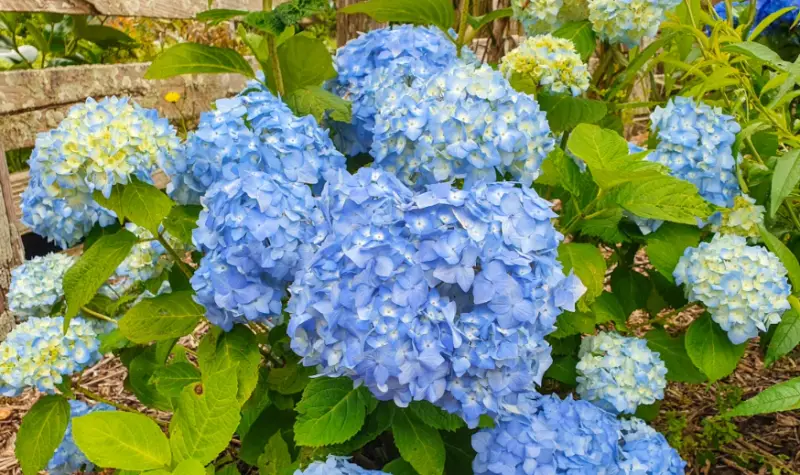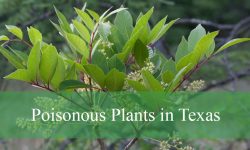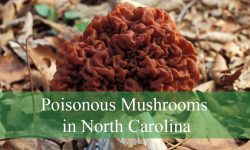Blue hydrangeas are treasured for their vibrant, captivating color, which adds a soothing and sophisticated touch to any garden. However, maintaining that iconic blue hue requires specific care practices and knowledge.
This comprehensive guide will give you ultimate tips for growing blue hydrangeas, from choosing the right variety to understanding soil requirements, watering needs, and more.
Overview of Blue Hydrangeas

Blue hydrangeas are typically varieties of Hydrangea macrophylla, often called bigleaf hydrangeas. Known for their color-changing flowers, bigleaf hydrangeas are influenced by soil acidity, making them unique among flowering shrubs. With proper care, blue hydrangeas can be a stunning focal point in your garden for years.
- Common Name: Blue hydrangea, Bigleaf hydrangea
- Botanical Name: Hydrangea macrophylla
- Family: Hydrangeaceae
- Plant Type: Flowering shrub
- Mature Size: 3-6 feet tall, 3-6 feet wide
- Sun Exposure: Partial shade to full sun
- Soil Type: Well-drained, rich, and moist
- Soil pH: Acidic (5.2-5.5 for blue flowers)
- Hardiness Zones: 5-9 (USDA)
- Native Area: Japan, China, Korea
Blue Hydrangeas Care
Choosing the Right Location for Blue Hydrangeas
Blue hydrangeas thrive in partial shade, making them ideal for areas that receive morning sun and afternoon shade. This exposure protects them from intense afternoon heat, which can cause wilting and discoloration of blooms. If you live in a cooler climate, full sun can be acceptable as long as you provide consistent moisture.
- Optimal placement: Look for a location that receives 4-6 hours of sunlight per day.
- Temperature considerations: Blue hydrangeas are hardy in zones 5-9, but protection from the afternoon sun in hotter climates (zones 8-9) is advised.
Soil Requirements for Blue Hydrangeas
The secret to maintaining the blue color in hydrangea flowers is in the soil’s pH level. Acidic soil (pH between 5.2 and 5.5) creates blue flowers, while alkaline soil (pH above 6) results in pink blooms. To achieve and maintain the ideal soil conditions:
- Conduct a soil pH test to determine the current acidity level. You can find test kits at garden centers or use digital soil testers.
- Adjust soil pH with amendments if necessary:
- To increase acidity, add organic matter such as pine needles, coffee grounds, or garden sulfur.
- Avoid using lime, as it raises soil pH and can turn blue flowers pink.
Soil quality also impacts hydrangea health. Blue hydrangeas prefer well-drained, rich, and moist soil. Adding compost or aged manure when planting helps to retain moisture and provide necessary nutrients.
Watering Tips for Blue Hydrangeas
Hydrangeas are known for their moisture needs, but overwatering or poor drainage can lead to root rot. Follow these tips to maintain healthy hydration levels:
- Young plants require consistent watering to establish a strong root system, so water deeply 2-3 times a week.
- Established plants need about 1 inch of water per week. In especially dry or hot weather, increase this amount to avoid wilting.
- Mulching around the base helps retain soil moisture and regulates soil temperature, especially beneficial for hydrangeas in sunnier spots.
Fertilizing Blue Hydrangeas
While fertilization isn’t necessary in nutrient-rich soil, a balanced fertilizer can help boost blooms and maintain plant health. For optimal results:
- In spring, apply a balanced, slow-release fertilizer (like a 10-10-10 mix) around the base of the plant.
- If the soil is acidic enough but you want to ensure continuous blue blooms, consider a fertilizer formulated specifically for acid-loving plants.
- Avoid high-nitrogen fertilizers after spring, as these encourage leaf growth over blooms. Instead, choose phosphorus-rich options if you want to encourage more flowers.
Pruning Blue Hydrangeas
Pruning blue hydrangeas is essential for maintaining a compact shape, encouraging new growth, and removing any damaged parts. However, improper pruning can reduce blooms, as blue hydrangeas bloom on old wood. Here’s how to prune correctly:
- Prune in late summer or early fall after the flowers have faded.
- Remove dead or weak stems at the base to improve airflow and prevent disease.
- Avoid cutting back strong, healthy branches, as these will bear the following season’s blooms.
- Remove only spent flowers and dead wood in late winter or early spring to keep your plant neat.
Protecting Blue Hydrangeas in Winter
In colder climates, winter can be harsh on hydrangeas. Follow these steps to protect your blue hydrangea during winter:
- Apply a 3-4 inch layer of mulch around the base to insulate roots and protect them from freezing temperatures.
- Wrap the plant in burlap if you live in a region where winter temperatures regularly drop below freezing.
- Avoid fertilizing late in the season, as this can encourage new growth that may not survive winter.
Pest and Disease Control
Blue hydrangeas are relatively pest-resistant, but a few common pests and diseases may still pose challenges:
- Aphids and spider mites: These tiny insects can suck sap from leaves, causing them to wilt and yellow. Use insecticidal soap or a gentle spray of water to remove them.
- Powdery mildew: High humidity and poor airflow can lead to this fungal disease. To prevent mildew, ensure there’s good spacing around the plant, and avoid overhead watering.
- Leaf spots: Often caused by bacterial or fungal infections, leaf spots can be treated with fungicidal sprays if they become severe.
Best Blue Hydrangea Varieties
Choosing the right blue hydrangea variety can enhance your garden’s aesthetics and ensure you meet climate-specific needs. Here are some popular options:
- Endless Summer (Hydrangea macrophylla ‘Endless Summer’): Known for its ability to bloom repeatedly from early summer to fall. Ideal for regions with fluctuating temperatures.
- Nikko Blue (Hydrangea macrophylla ‘Nikko Blue’): A classic blue hydrangea with large, rich blue blooms and an extended blooming period.
- Blue Wave (Hydrangea macrophylla ‘Blue Wave’): Featuring lacecap-style flowers, this variety offers delicate blue blooms and is perfect for adding subtle elegance.
- Penny Mac (Hydrangea macrophylla ‘Penny Mac’): Another reblooming type, this variety blooms on both old and new wood, giving you consistent color throughout the growing season.
Propagation Tips for Blue Hydrangeas
Blue hydrangeas can be propagated through cuttings to create new plants. Here’s a quick guide:
- Take a 4-6 inch cutting from a healthy stem in late spring or early summer.
- Remove lower leaves and dip the cut end in rooting hormone powder.
- Insert the cutting into moist potting soil and cover with a plastic bag to retain humidity.
- Keep in indirect sunlight and water regularly until new roots form.
Common Problems with Blue Hydrangeas
Though blue hydrangeas are generally hardy, a few common issues may arise:
- Color Fading: If blooms turn pink or fade, the soil may be too alkaline. Adjust the pH to increase acidity and restore the blue color.
- Wilting: Wilting often indicates a lack of water or too much direct sunlight. Adjust the watering schedule and consider providing more shade.
- Slow Growth or No Blooms: Poor soil, incorrect pruning, or insufficient sunlight may be the cause. Ensure all care requirements are met for optimal growth.
Final Tips for Growing Blue Hydrangeas
By following these ultimate tips for blue hydrangea care, you can enjoy a garden filled with vivid blue blossoms throughout the growing season. Here are some final reminders:
- Test and monitor soil pH regularly to maintain the desired blue hue.
- Water consistently, especially during dry periods, but avoid waterlogging.
- Prune with care to avoid removing flowering buds and protect the plant from harsh winter conditions.
With proper care and attention, blue hydrangeas can be a long-lasting and breathtaking addition to any garden, offering seasonal interest and vibrant color that transforms your outdoor space.






